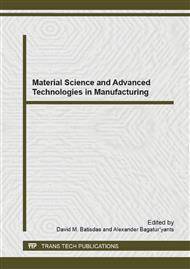[1]
Gao Yuan,Zhang Jun. A comparative study on the self heat-insulation wall of aerated concrete blocks and the external heat-insulation wall of polystyrene panels. New Building Materials: 48-52. 2010. 3.
Google Scholar
[2]
N. Narayanan, K. Ramamurthy. Structure and properties of aerated concrete: a review. Cement Concrete Composites: 321-329. (2000).
DOI: 10.1016/s0958-9465(00)00016-0
Google Scholar
[3]
H. Esmaily , H. Nuranian. Non-autoclaved high strength cellular concrete from alkali activated slag. Construction and Building Materials: 200-206. (2012).
DOI: 10.1016/j.conbuildmat.2011.06.010
Google Scholar
[4]
R. Arellano Aguilar, O. Burciaga Díaz, J.I. Escalante García. Lightweight concretes of activated metakaolin-fly ash binders, with blast furnace slag aggregate. Construction and Building Materials: 1166-1175. (2010).
DOI: 10.1016/j.conbuildmat.2009.12.024
Google Scholar
[5]
Y. Lo, X.F. Gao, A.P. Jeary. Microstructure of pre-wetted aggregate on lightweight concrete. Building and Environment. (1999).
DOI: 10.1016/s0360-1323(98)00060-2
Google Scholar
[6]
Hu Shu-Guang, Wang Fa-zhou, Ding Qing-jun, Peng Bo. Influence of Water Absorption and Pre-wetted Method of Lightweight Aggregate on the Workability of Concrete. J. of Huazhong Univ. of Sci. & Tech. (Urban Science Edition). (2002).
Google Scholar
[7]
Hu Shu-guang, Yang Wen, Lu Lin-nu. Experimental Research on Influence Factors of Absorbing and Releasing Water Process of Lightweight Aggregate. High Way. (2006).
Google Scholar
[8]
N. Narayanan, K. Ramamurthy. Structure and properties of aerated concrete: a review. Cement and Concrete Research. (2000).
DOI: 10.1016/s0958-9465(00)00016-0
Google Scholar
[9]
N. Narayanan, K. Ramamurthy. Structure and properties of aerated concrete: a review. Cement & Concrete Composites. (2000).
DOI: 10.1016/s0958-9465(00)00016-0
Google Scholar


